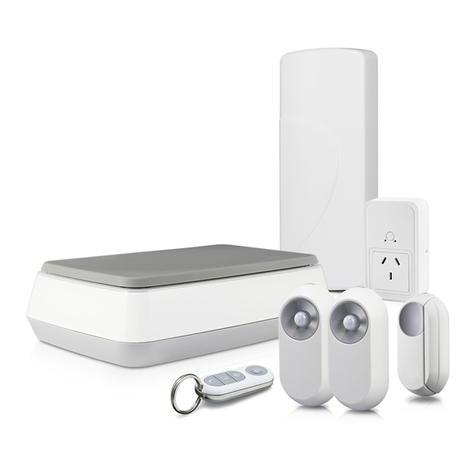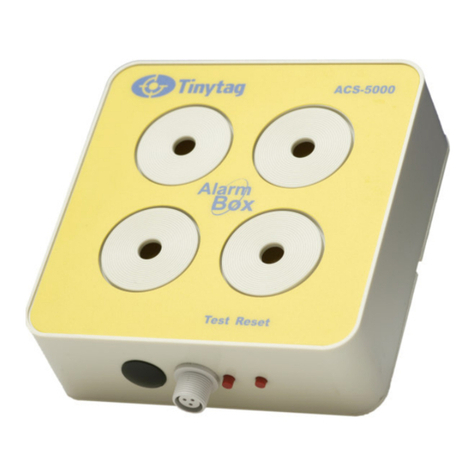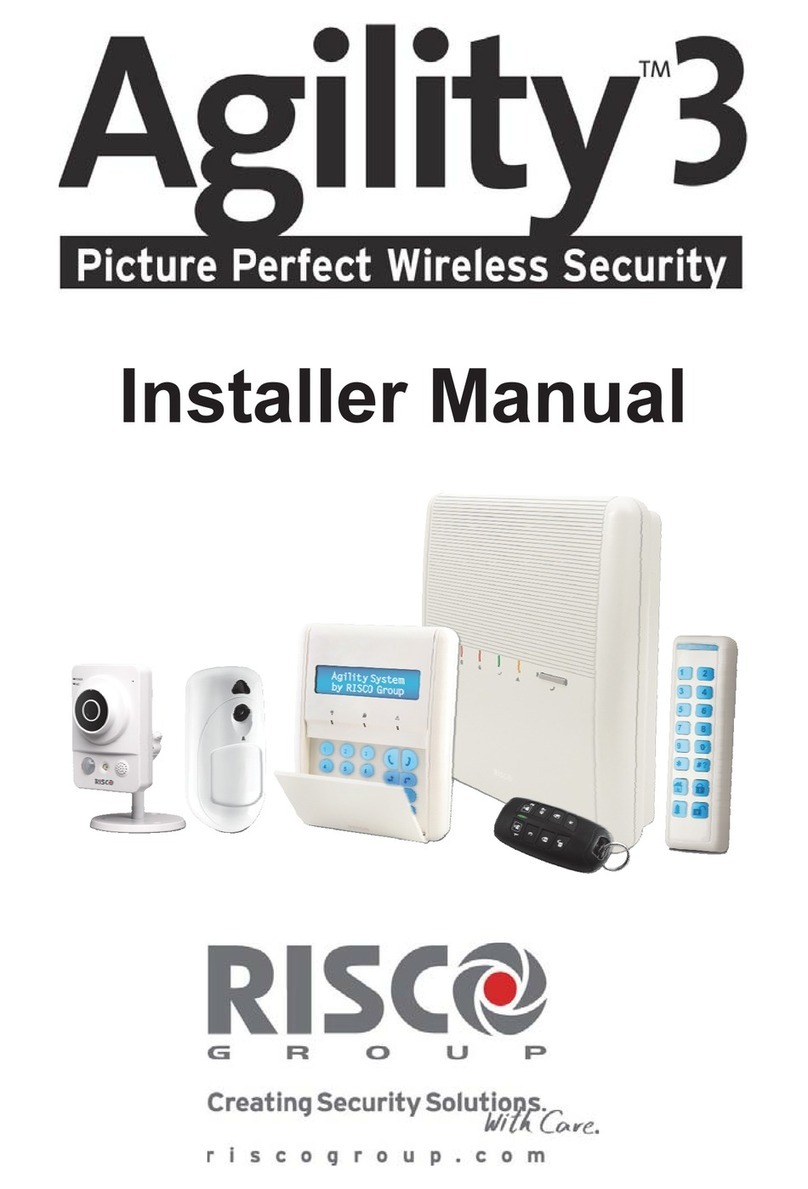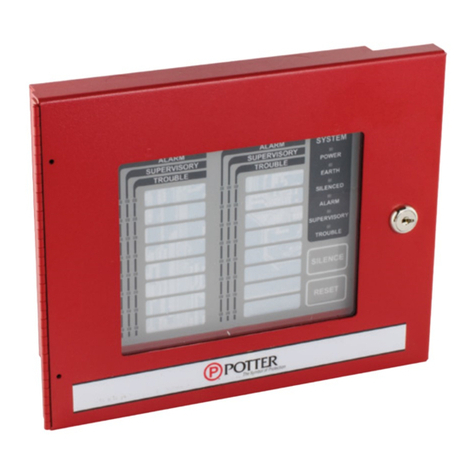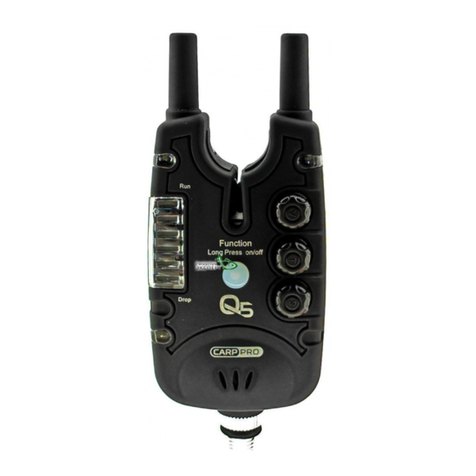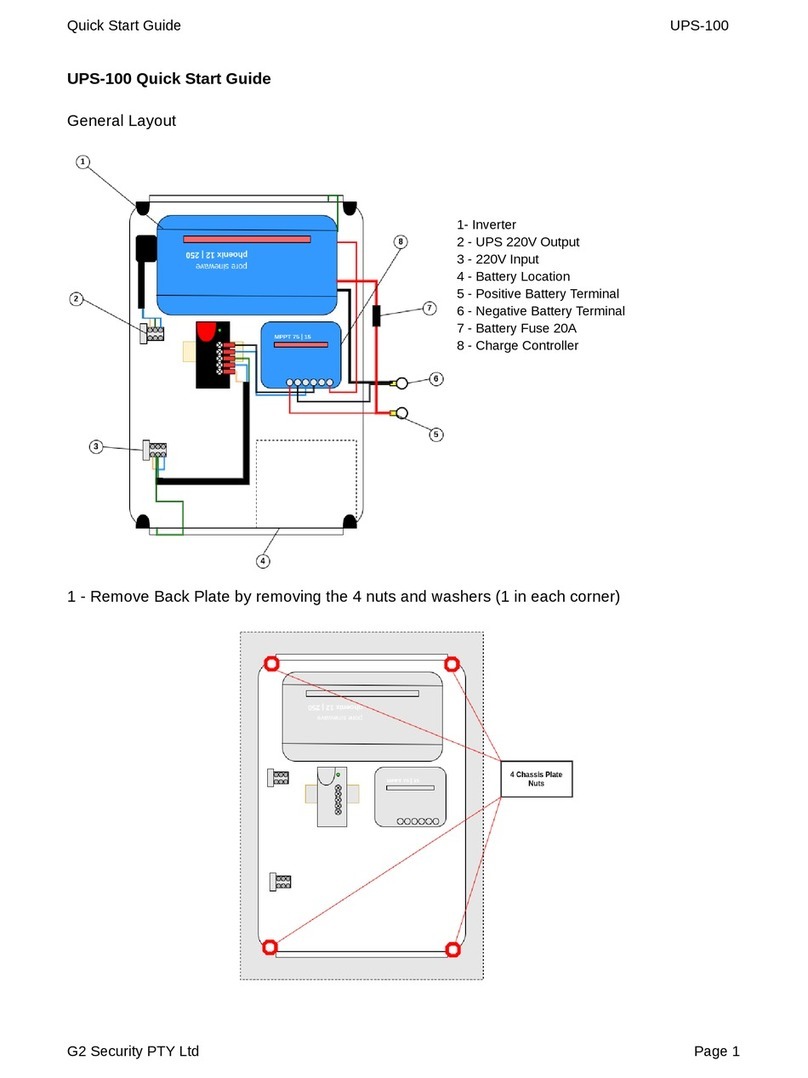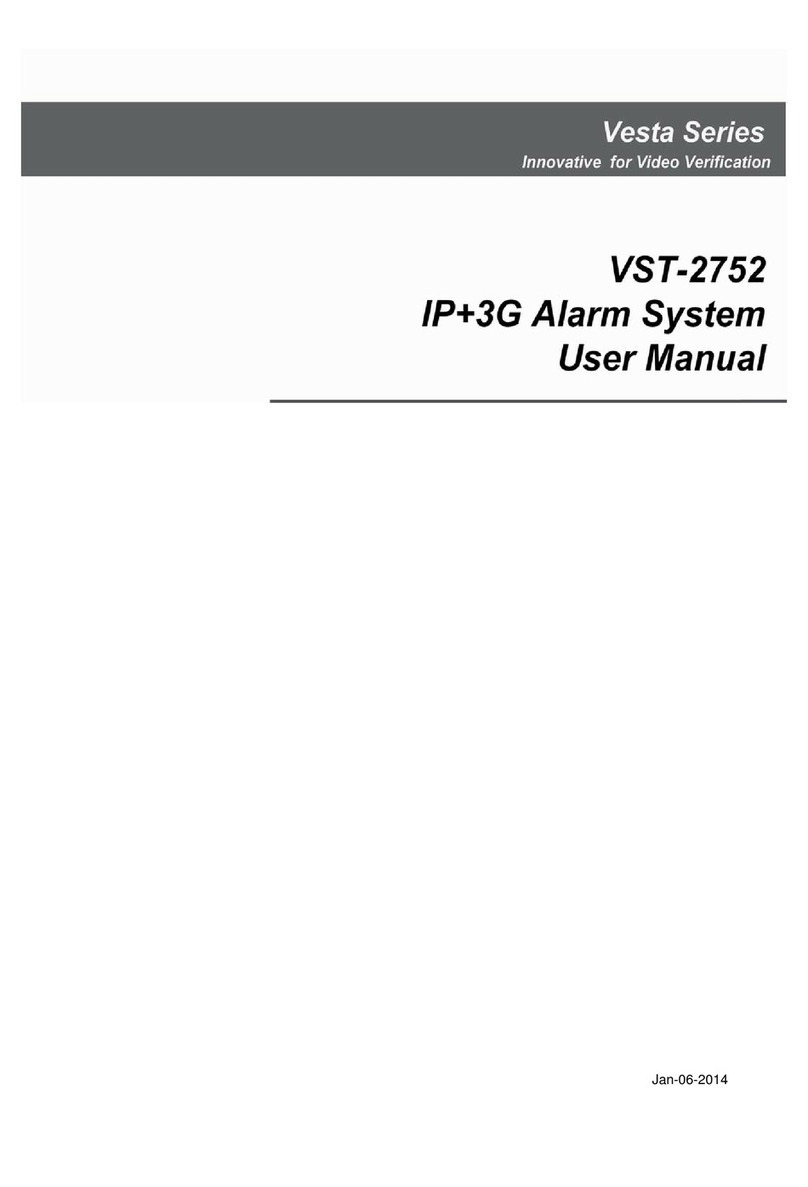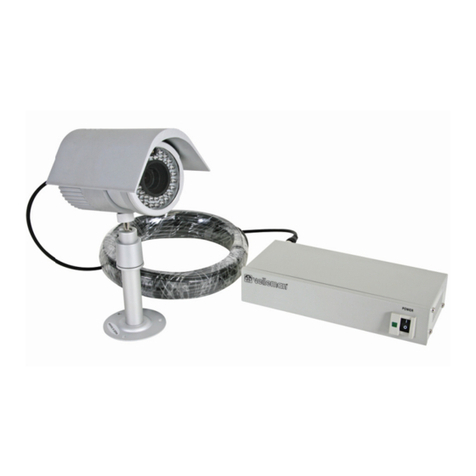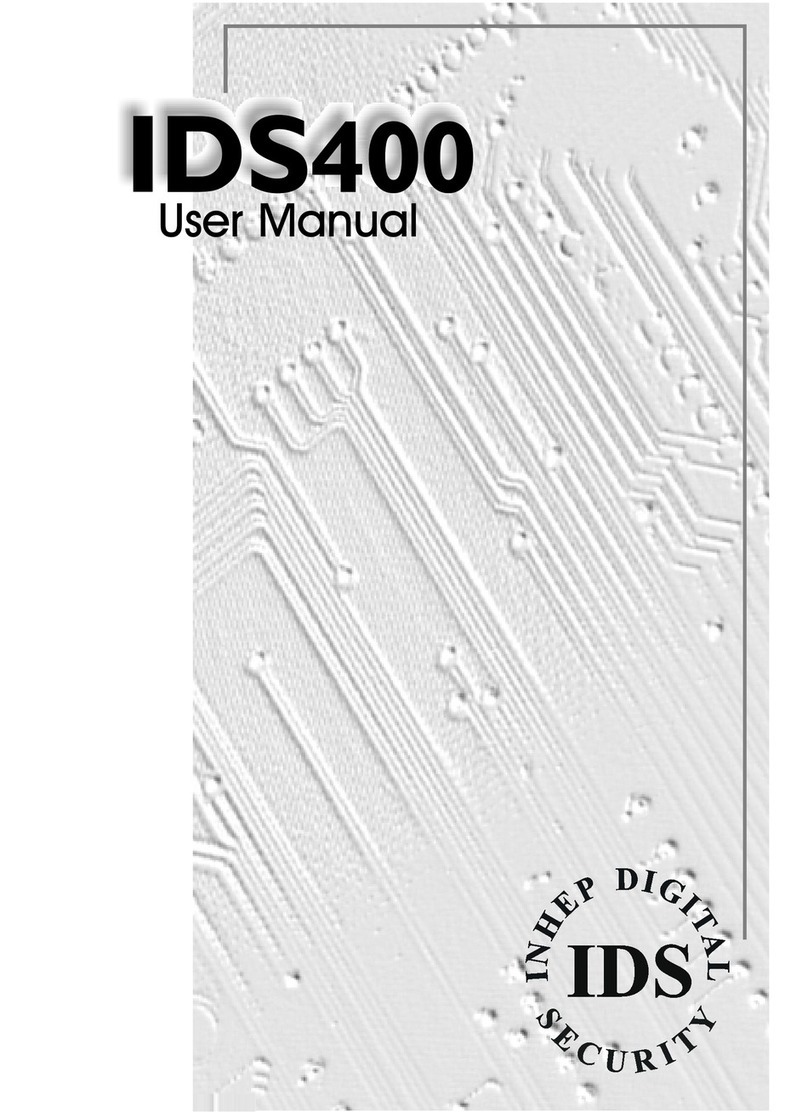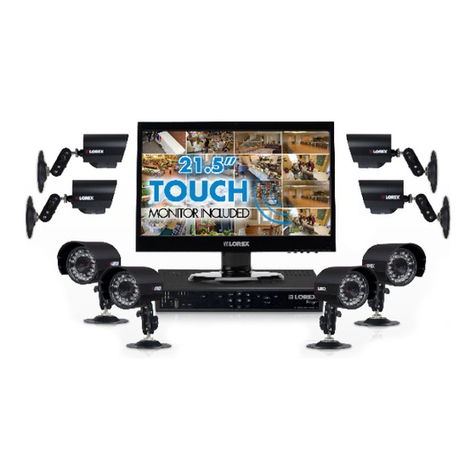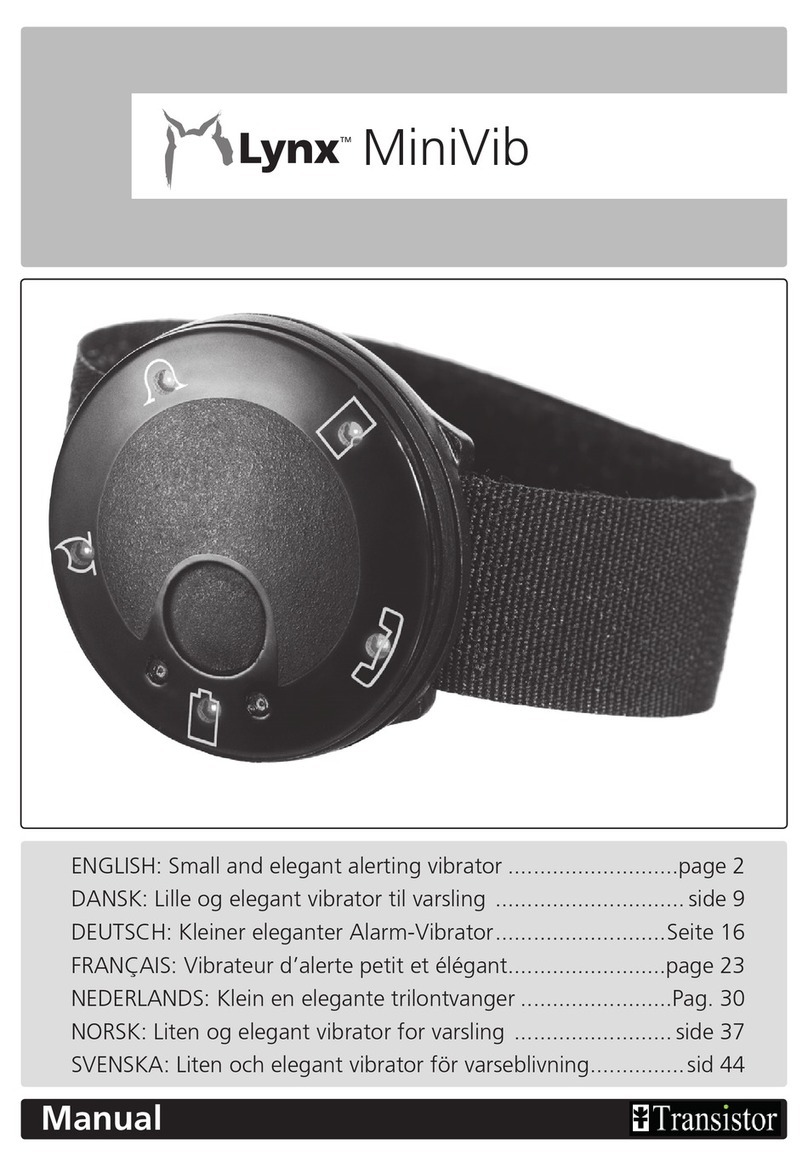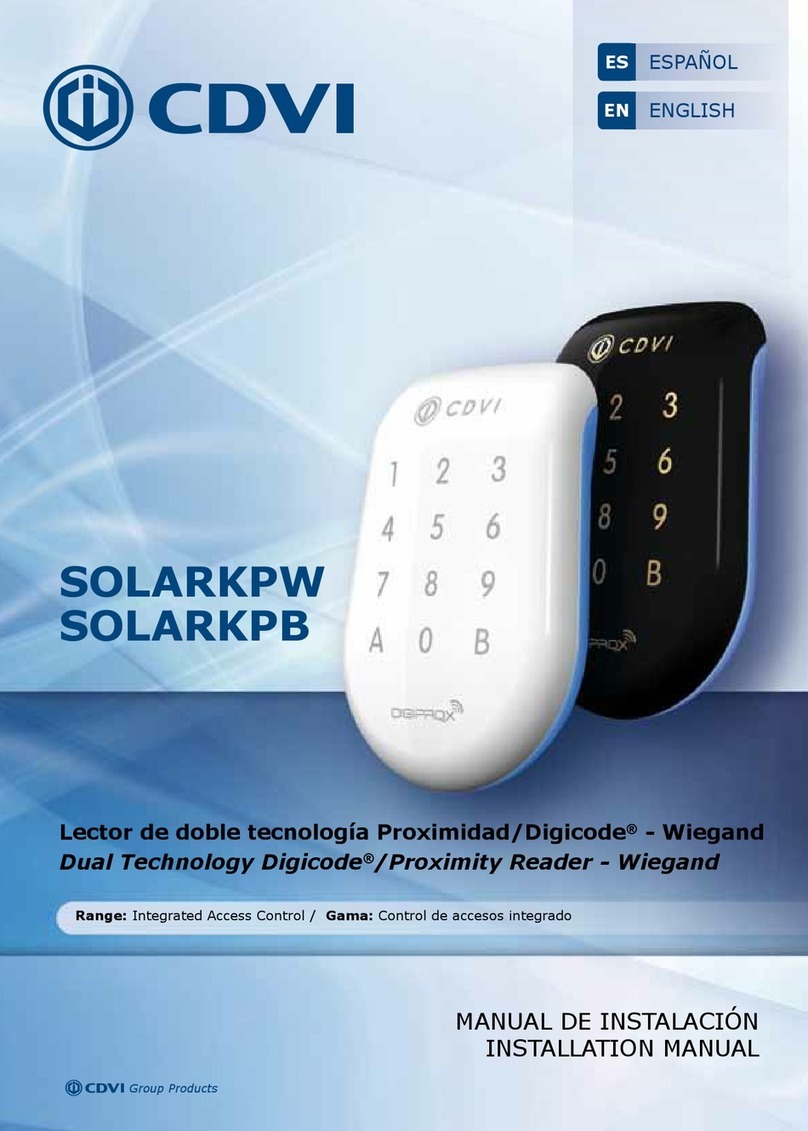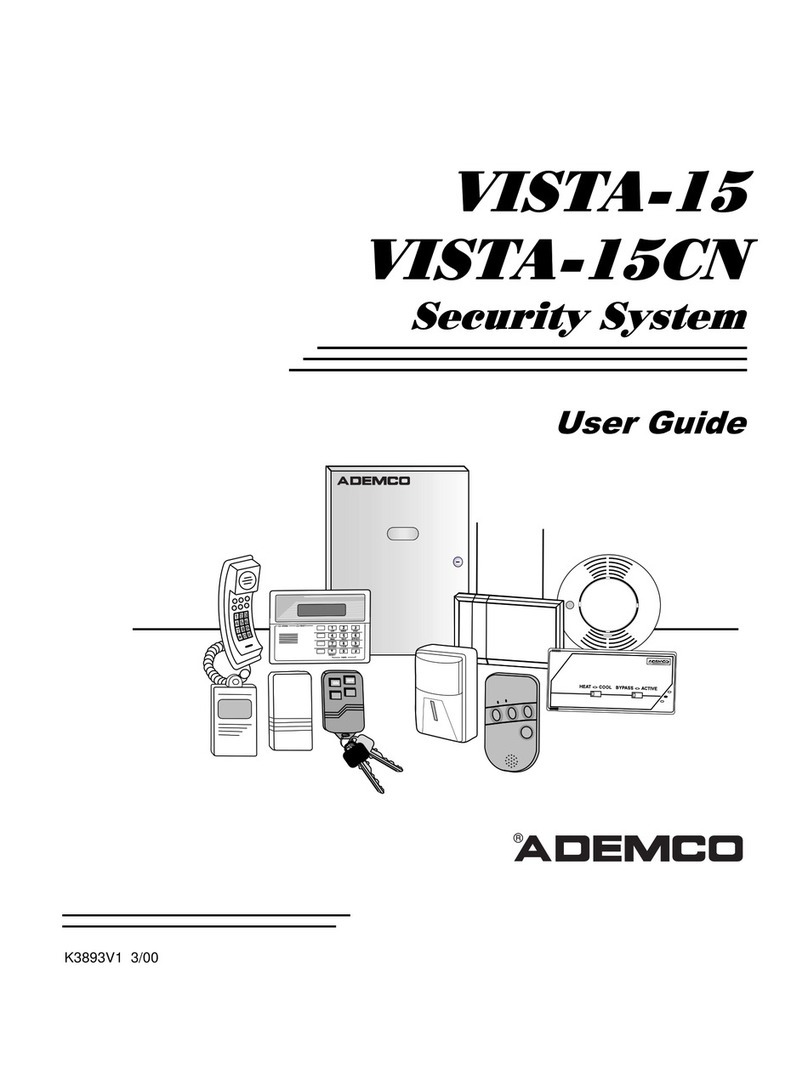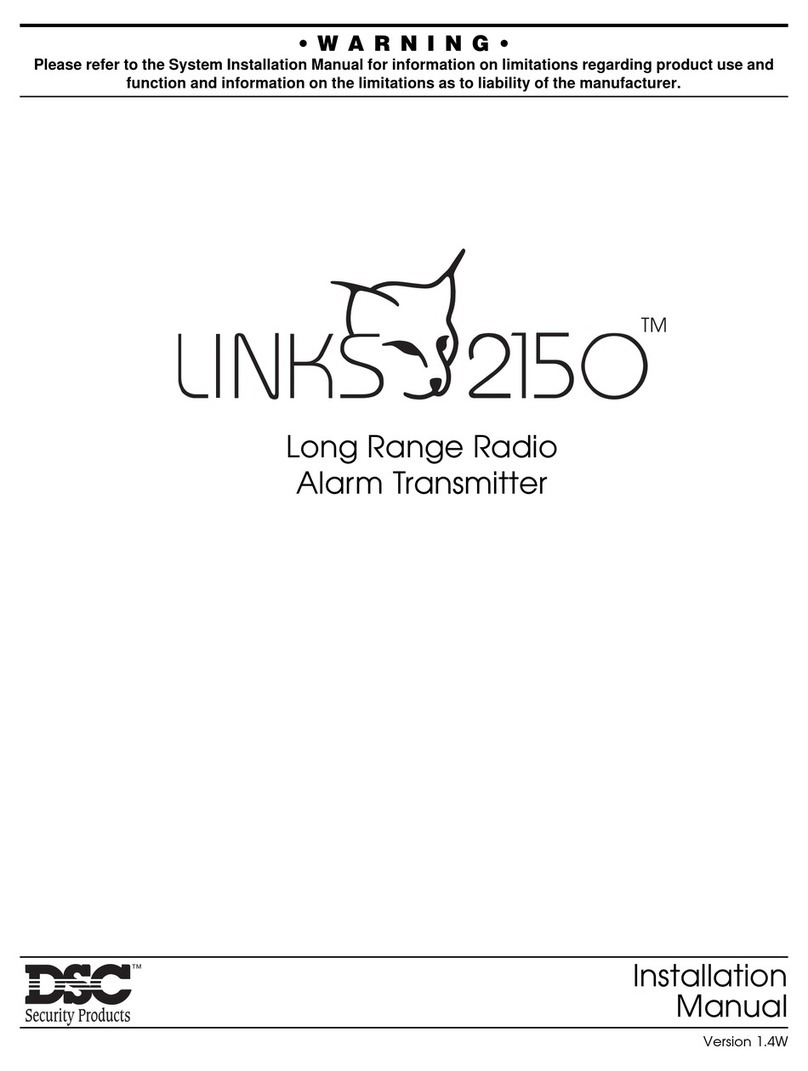Audio Tech LDA One User manual

User Manual
EN54-16 and EN54-4 Voice Alarm and Public
Address Certified System LDA ONE


Content Index
1 INTRODUCTION.................................................................................................................1
1.1 General description......................................................................................................2
1.1.1 Luminous indicators.............................................................................................2
1.1.2 Controls................................................................................................................2
1.2 User profiles. Access levels. Password.......................................................................3
2 INSTALLATION..................................................................................................................4
2.1 Orientation change......................................................................................................
2.2 Inputs and outputs.......................................................................................................
2.2.1 Power supply........................................................................................................
2.2.2 Battery installation................................................................................................5
2.2.3 Fire central interface.............................................................................................5
2.2. Speaker line outputs, zones.................................................................................7
2.2.5 Audio source inputs..............................................................................................8
2.2.6 ACSI microphones and devices input..................................................................8
2.2.7 LINK output...........................................................................................................9
2.2.8 Pre amplified audio outputs. PRE-AMP OUTPUTS.............................................9
2.2.9 Attenuator cancellation output, OVERRIDE.........................................................9
2.2.10 Internal connections...........................................................................................9
3 CONFIGURATION AND COMMISIONING......................................................................11
3.1 Power supply.............................................................................................................11
3.1.1 Install battery charger.........................................................................................11
3.2 Automatic Configuration. <Run Autosetup>..............................................................11
3.2.1 Date and time.....................................................................................................11
3.2.2 Evacuation messages. Messages......................................................................11
3.2.3 Advanced mode question...................................................................................12
3.3 Manual configuration <Configuration>.....................................................................13
3.3.1 Audio Inputs........................................................................................................13
3.3.2 Audio Outputs.....................................................................................................1
3.3.3 Speaker Line configuration. <Speaker Lines>.................................................1
3.3. Zones Configuration <Zones>...........................................................................15
3.3.5 Import and edit messages. Messages...............................................................15
3.3.6 PA/VA microphones. ACSI devices...................................................................16
3.3.7 CIE Inputs...........................................................................................................16
3.3.8 Battery charger. <Battery>.................................................................................17
3.3.9 Save and charge configuration. <Load/Save>..................................................17
3.3.10 System configuration <System>.....................................................................18
3. Login. Access configuration.......................................................................................18
3.5 Advanced configuration.............................................................................................18
3.5.1 Equalizer setup...................................................................................................18
3.5.2 System Variables................................................................................................18
4 SYSTEM USE ..................................................................................................................20
.1 Emergency management. <VA Operator.>..............................................................20
.1.1 Launch evacuation and alert <Launch EVAC/ALERT>....................................20
.1.2 Enter EMG state. <Enter EMG>........................................................................20
.1.3 Stop voice announcement. <Silence Zones>...................................................20
.1. Disable emergency state and restart <Reset Zones/Sys EMG>......................20
.1.5 System monitor. <VA Monitor>......................................................................20

.2 PA management. <PA Operator>............................................................................20
.2.1 Volume adjustment <Volume>..........................................................................21
.2.2 Matriz <Matrix>...................................................................................................21
.2.3 Monitor <Monitor>.............................................................................................21
.3 System monitor. <Sys Monitor>..............................................................................21
.3.1 Emergency log. <EMG_Log>............................................................................22
.3.2 Fault log. FLT_LOG <FLT_Log>.......................................................................22
.3.3 System log. ERR_LOG <SYS_Log>..................................................................22
.3. LOGs configuration. <Logs Config>................................................................22
.3.5 System information <Sys Info>..........................................................................22
.3.6 Test.....................................................................................................................22
5 SYSTEM MAINTENANCE................................................................................................23
5.1 FAILURE INDICATION RESOLUTIONS...................................................................23
5.1.1 Open Cover Detected.........................................................................................23
5.1.2 Speaker lines......................................................................................................23
5.1.3 Transmission line with CIE.................................................................................23
5.1. Power supply......................................................................................................2
5.1.5 System................................................................................................................2
6 TEC NICAL C ARACTERISTICS..................................................................................25
6.1 EN5 -16 functions.....................................................................................................26

SAFETY INSTRUCTIONS
Please, read carefully these safety instructions.
1. Save this User Manual for future reference.
2. The equipment must be connected to a bipolar power cut-off switch according to the
low voltage regulation and must be accessible for disconnection.
3. The equipment should not be exposed to water or splashing and objects filled with
liquids should not be placed on the equipment. Do not use liquid or spray detergent for
cleaning. Do not expose this equipment to humid areas.
. No flame sources, such as lighted candles, should be placed on the equipment.
5. Install this equipment on a safe surface. If you do not place the equipment on a safe
surface, it may fall and be damaged.
6. Enclosure grills serve for ventilation. DO NOT COVER THE GRILLS. Leave 5 cm on
each side for proper ventilation.
7. The equipment should only be opened by qualified or trained personnel.
8. The equipment must be connected to an outlet with protective earthing.
9. Pay attention to the connection polarity when operating the equipment with a direct
current (DC) power source. The reversed polarity connection can cause damage to the
equipment, or to the power supply.
10. If any of these situations originates, let technical staff check the equipment:
a) The power cord or plug is damaged.
b) Liquid has infiltrated inside the equipment.
c) The equipment has been exposed to moisture.
d) The equipment has not worked well or does not get it working following the
instruction manual.
e) The equipment has been dropped and damaged.
f) If the equipment has obvious signs of damage.
11. The wiring must be carried out only by trained personnel. Disconnect the audio
inputs and outputs while making connections or disconnect the equipment from the power
supply. Be sure to use the proper cables to make the connections.
1

1 INTRODUCTION
LDA ONE PA/VA system is certified according to the requirements of EN 5 -16 and
EN5 - , ensuring a safe and controlled emergency evacuation. Its high performance,
versatility and audio quality make it a powerful and affordable music and voice
distribution system for all types of installations. Manual for FW version 01.00.04.01
onwards.
This user manual is valid for the following equipment and accessories of the series:
•ONE 500. PA/VA Central module
◦Battery Charger ONE-BC: EN5 - battery management module
•LDATFL2. End of Speaker line Device
•LDAMPS-8Z. 8+ zone microphone.
•LDAVAP-1. Voice Alarm Panel with optional zone selection.
Other accesories:
•Installation support for rack and wall.
1
Illustration 1: Interior view

1.1 General description
1.1.1 Luminous indicators
State indicators show in every moment the working condition of the equipment or
system. They are located at the left side of the screen.
a) PWR: “POWER”. Green
On: when the equipment is powered from any of the possible power sources.
b) EMG: “EMERGENCY”. Red
On: when the equipment is in an emergency operating state (voice alarm), either
because of a manual or automatic activation from the CIE (Fire Control and Indication
Equipment) from any of the available emergency inputs.
Simultaneously, when the indicator is turned on, a continuous audible warning will
be issued. This warning tone can be silenced by the button “BACK”.
c) FLT: “FAULT”. Yellow
On: when the equipment is in failure state. This indicator activates automatically
after detecting failure in any of the supervised functions.
Simultaneously when the indicator is turned on, an intermittent audible warning
will be issued. This warning can be muted by the "BACK" control. It will also stop when
the emergency microphone is used.
d) SYS: “SUSTEM FAULT”. Yellow
On: In case of any system fault like configuration memory lost, messages lost,
internal device failures this led will turn on.
1.1.2 Controls
a) Scroll controls
They are at the right side of the display. They allow
the user to move around the Use and Configuration
menus. The central button is the function ENTER/OK,
that can be used to accede to the menu and the
operations that need confirmation.
2
Illustration 2: Control panel

b) Direct access controls
i) OK: Makes the indicator test by pressing the button for 2 seconds .
ii) RESET/RST: Pressing this button for 2 seconds allows the user to restart the
operating condition of the equipment when it is in either emergency or fault state.
iii) BCK:
•Menu navigation: go up one level / return. Pressing this button for 2 seconds
returns to the initial screen and restarts the access level.
•Mute function of acoustic alarm when it is sounding.
1.2 User profiles. Access levels. Password
Access levels define the following user profiles that can operate with the
equipment/system. Each access level has different permissions to different menu
options, with level 1 being the lowest and level with the greatest number of available
options.
Generally, access levels allow to:
•Level 1(L1): EN5 element visualization and use of PA System(*)
•Level 2(L2): System management and emergency functions. Password: 0002
•Level 3(L3): System configuration and advanced functions. Password: 0003
•Level (L ): Accessible only by the manufacturer.
Each screen that needs access to the user level required for the function to which you
want to accede will require it. A higher level user or password will be able to access
lower level functions.
To accede with a certain level of access or to configure the access mode, the Login
menu is used. You can select between access mode by confirmation, or -digit password
access.
Login has a validity time of 5 minutes. It can be reduced by pressing the “BACK”
button during 2 seconds, and it will go back to the start screen as a level 1 user.
(*) PA Block: An access for the password can be configured for PA controls where the
functions volume, routing, etc. are. (See 3. )
3

2 INSTALLATION
The equipment allows the installation in wall or rack, and in vertical or horizontal
orientation. Installation accessories are available to facilitate the installation procedure.
To fix the equipment to the supports, of the 8 outside screws of the equipment shall
be removed. From each pair of screws the one that is closer to the side where the
support will be placed is removed. The clamping wings are inserted through the
corresponding perforations and the screws that fix the equipment are placed preventing it
from falling.
2.1 Orientation change
To change the orientation, the screws that fix the front of the equipment to the
chassis are removed. This way, the front is released, and the orientation can be changed
so that the controls are accessible according to their final position.
2.2 Inputs and outputs
In this chapter, the connectors of the ONE series are described.
The enclosure has 7 pre-cut holes for the entry and exit of the wiring, easily removed
with a screwdriver. Its size is 36mm, which matches the size of the racors for 32mm
tubes.
2.2.1 Power supply
The equipment has redundant power supply according to EN5 - thanks to the battery
charger accessory. The AC power supply range is universal type 90-2 0 V ~ input and
frequency 50 or 60Hz, with integrated Power Factor Correction (PFC).
The backup source consists of a battery that is installed internally with the included
battery charger by activation.
a) Main power input
The power connection is made directly
by wiring it to the interior of the equipment,
it must include the power disconnection
elements externally. To manipulate the
equipment, the external power must be
disconnected.
There is a three-pole 1.5-2.5mm cable
connector marked for Phase, Neutral and
Ground. The cable can be inserted and
removed thanks to the push button.
Illustration 3: Front fixation and interior view
Illustration 4: Power connections

b) Disconnection switches
These switches cut the power path of the power supply and the battery. They help to
avoid the danger of sparks when connecting the battery and it's useful for restart the
equipment completely.
2.2.2 Battery installation
Before installing the battery it is recommended to switch
off the equipment using the switches in the supply circuit.
This system allows to mount the battery safely and avoiding
unwanted short circuits.
The equipment has a cavity for 12V sealed lead-acid
batteries with a maximum size of 167 (height) x181 (width)
x76 (depth) mm.
The equipment consumes 9Ah of battery for 2 h in stand-
by and 8Ah for one hour in evacuation at maximum power. With the recommended
battery brand YUASA NP17-12I we have 17Ah, enough to comply with stand-by and
evacuation needs.
Additionally, a 25 Amps safety fuse is available for the battery input located on the
supply plate.
Battery assembly
Unscrew the fixing part and release the flange that holds the cable for transport.
Connect the battery, put in the housing and fix it again. Remember that lead acid
batteries should not be installed inverted.
2.2.3 Fire central interface
The emergency activation interface is indicated for interconnecting with fire control
and indication equipment. All input connections are supervised in the event of failure in
the transmission line. Said interface is composed of three sections.
5
Illustration 5: Battery installation

Connection is made using female euroblock connectors given with the equipment. The
cable section range for each pole of this connector is: 0,1 1,5mm2 (30 1 AWG).→ →
Inputs are activated when the dry contact is voltage free. (N.O.= normally open)
a) Zone emergency activation inputs
These inputs are connected the same way as the general entrance to allow link
supervision.
Default function: When the input of one the zones Z1...Z6 is activated, the state of
general emergency will get activated and the list of evacuation messages for these
zones will start to be played. The rest of zones will play the list of alert messages that
can be configured in the configuration menu.
If the contact is deactivated, the reproduction of the messages will be paused, but a
restart operation will be needed to go back to the inactivity mode or PA.
b) General emergency activation input
Supervised inputs for voltage-free dry contact connection (N.O.): Restart and
Emergency.
So that the link can be supervised, the connection of the dry contact to the equipment
must be carried out by means of two external 10K resistors (supplied with theΩ
equipment), placed at the output of the fire panel as indicated in the illustration 6.
Function: When the general emergency entrance (EMG) is activated by means of a
contact closure (0V), the equipment will automatically change from working mode to an
emergency state, and emitting the voice evacuation message through all zones of the
system. When the reset input (RST) is activated, the equipment will exit the emergency
operation mode and return to the idle state (PA).
It can be configured so the EMG input makes the combined function, it's called Auto-
reset. See b
NOTE: To avoid non-desired activation problems the system does not allow the alarm
activation inputs to complete the sequence EMG, RST, EMG instantly. The second
consecutive activation will leave about 2 seconds of margin.
c) State output
These outputs are dry contacts that indicate if the equipment is in emergency or failure
state when they are closed. (N.O.)
6
Illustration 6: Fire Central Interface
Illustration : Supervised CIE connection

They allow a maximum current of 350mA and a voltage of 350V.
d) RS-485/MODBUS Interface
Communication port on RS- 85 half-duplex base for communication with fire control
panel. It needs to be connected by 2 twisted wires (A, B) plus a GND wire.
The port uses protocol MODBUS RTU and is used to connect a fire central with
advanced commands. LDA will provide an advanced manual for this function.
2.2.4 Speaker line outputs, zones
The equipment has 6 zone outputs. Each line connection has two terminals + and –
for the speaker connection in 100V or 70 V speaker lines.
The total power of the equipment can be distributed in the departures of zones
according to the design of the installation without exceeding the maximum limit per
output: Zones 1 and 2 500W, Zones 3, ,5,6 120W.
The connection is made by means of a 2-pin female euroblock connector and 5.08mm
pitch (supplied with the equipment). The cable section range for each pole of this
connector is: 0.5 2.5mm2 (22 12 AWG).→ →
NOTE: Connection should be made in order from zone 1 to zone 6, in other case the
Autosetup funcion will not detect correctly the installed lines.
Output voltage (up to 100 V) can be dangerous, so a correct isolation of the speaker
lines in necessary. Test that there are not short circuits, fake contacts or ground
derivations in any of the lines.
a) Backup amplifier
The system has two power amplifier and a switching system who selects the proper
one in each case. When a amplifier fault is detected the system will use only the working
amplifier selecting the higher priority audio, emergency microphone followed by
emergency message have the higher priority.
7
Illustration 8: Speaker line outputs

2.2.5 Audio source inputs
The system integrates 3 inputs for background music and/or microphones. See the
audio inputs configuration for further details. At the side of each input there is a luminous
audio signal indicator that activates with signal over - 0dBV.
The audio input connection is made by euroblock connectors that allow cable sections
between 0,1 1,5mm2 (30 1 AWG). Input impedance 10Kohm.→ →
a) #1 and #2 Inputs
Inputs for background music or priority
signal. They allow an activation trigger for
each dry contact or signal level, with zone
routing configuration. Input level 1Vrms.
Balanced audio.
b) #3 Input
Configured as a background music
input, because it does not have activation
trigger. Input level is 1 Vrms, balanced
audio input.
c) #4 Input, internal mixer
The system has a # input that has no
external connector, because it is a mixer
integrated in the DSP that uses the 3
inputs. User can configure which one/s
will be in mixer.
2.2.6 ACSI microphones and
devices input
This input allows the connection of up to 8 compatible devices such as MPS-8
microphones or VAP-1 emergency management panels.
8
Illustration 9: Audio Source Inputs
Illustration 10: PA system devices connection

The ACSI input integrates audio, communications and power allowing the emergency
devices to be fed directly from the integrated backup source.
The connection is made using standard UTP network cable T568B. The connection is
made by bus, with a maximum connection length of 1000m.
This input has a signal indicator LED for audio tests and a state LED that will indicate
that there are connected devices.
2.2.7 LINK output
This connector is intended for the future interconnection of ONE devices.
2.2.8 Pre amplified audio outputs. PRE-AMP OUTPUTS
ONE has outputs at 1 Vrms (line
level) to connect external equipment as
backing amplifiers.
These outputs can be configured to
obtain the same audio as the zones or
as recording output of the messages of
microphones in evacuation.
Connection is made by 3-contact
Euroblock type connectors and 3,81
mm pass (given with the equipment).
Cable section range for each pole of
this connector is: 0,1 1,5mm2 (30 → →
1 AWG). The maximum output load is
10Kohm.
2.2.9 Attenuator cancellation output, OVERRIDE
In the control board there are 6
attenuator override outputs for public
address lines. In idle state they have a
voltage of 0V. In active state, each
output has a voltage of 2 V DC and
20mA of maximum current. Each exit
has two poles.
Connection is made using 2-contact
Euroblock female connectors and 3,81
mm pass (given with the equipment).
Cable section range for each pole of
this connector is: 0,1 1,5mm2 (30→
1 AWG).→
2.2.10 Internal connections
There are some connection ports for internal wiring. Some of them must not be
menipulated by the user.
a) Micro-SD card connector
This connection is used for software amplification as the installation of the EN5 -
battery charger.
9
Illustration 11: Preamplified outputs
Illustration 12: Attenuator cancellation output

b) USB
USB connector A type
for external memory
connection (MEMORY-
STICK) that allows to
import messages, actualize
firmware and import and
export configurations or
Logs.
c) Expansion bay
This connector us an
expansion bay expected for
future system ampliations.
Its future options will be to
provide the simple or
redundant Ethernet
connection equipment and
redundant control loop for
interconnected ONE
equipment.
10
Illustration 13: Other internal connections

3 CONFIGURATION AND COMMISIONING
Once made the needed connections, the elements and options used in the system
should be configured.
3.1 Power supply
Before activating system power, test previously service commuters that unable AC
source inputs and battery, see Illustration 3.
Connect the equipment to the electrical network. It should turn on correctly. The front
power indicator lights up and the firmware version will appear on the display during
startup. Then, the start screen will appear.
3.1.1 Install battery charger
The battery charger activation card must be installed, if available, before powering the
equipment.
The memory card includes the battery charging software. It is installed in the micro SD
(b) card connector . Move the metal part following the OPEN arrow and get up. Place the
card, lower the metal tab and move in the opposite direction LOCK to fix it. When the
equipment is turned on, the option to activate the charger and battery monitoring must
appear in the configuration menu.
3.2 Automatic Configuration. <Run Autosetup>
The automatic configuration function saves much of the configuration work of the ONE
system. The operation of the automatic configuration system makes the adjustments
according to what is detailed in the following sections. Any configuration can be
subsequently edited manually.
It is launched by pushing OK button in the option “Run AutoSetup” in the menu
Configuration/System/AutoSetup
This configuration verifies the elements follow EN5 requirements as described in the
following sections.
3.2.1 Date and time
The automatic system tests the configured date, if it is previous to 2010 it will ask the
user to adjust it manually.
3.2.2 Evacuation messages. Messages
System will ask the user if it wants to import messages,(only if USB memory is
connected) asking for the DATAxx directory to import them. Number xx is chosen
between 00 and 99.
Import folders are:
..\DATAxx\EVAC\ for evacuation.
..\DATAxx\ALERT\ for alert.
All the messages in each folder can be imported until the space is filled. Reproduction
order will be alphabetical. If the name coincides, the intern message is overwritten.
Important NOTE: File names should have a maximum of 8 characters with no spaces
nor spCIEal characters (simbols) with the “.wav” extension.
11

File format is monochannel 16 bits PCM with sampling at 2 or 8 Khz
LDA offers a free tool to convert audio files, you can find it int our support web page.
3.2.3 Advanced mode question
The system ask about advanced mode yes or not option. In advanced mode user will
be able to select A+B speaker lines configuration. Once selection is done system will
follow these steps to self-configure.
a) Zones and speaker lines. Zones
The system checks automatically the loudspeaker lines, looking for the ones that are
being used. They must be connected in order since when the equipment detects a line
with impedance higher than the measurement range (600 Ohm), it considers that neither
this line nor the following ones will be used.
When the user wants to use a line with high impedance (more than 600 Ohm), install
an end of line terminal (LDATFL2) in order to let the equipment recognize it as a zone in
use. All the detected zones are configured with active line supervision, but this can be
changed from the menu Configuration/Zones.
Using the active line supervision volume controllers cannot be used, because the input
impedance varies depending on the adjusted level.
b) CIE Interface (Fire Detection Central)
The system checks that the inputs are connected correctly with the specified
terminators (2.2.3). When it detects the end of line (EOL) devices the supervision of the
general input and/or the connected zone inputs will get activated. If the EOL devices are
not detected they will remain active without supervision, working in dry contact mode.
c) Battery
Battery management depends on the installation of the charger accessory EN5 - .
The system checks if the microSD card is installed with the charger module. In this case,
the system will check that there is an installed battery, checking the voltage and the
internal impedance. Minimum working voltage is 10,5 V with a maximum impedance of
200mOhms. We recommend to adjust impedance according to installed battery once
this is 100% charged.
d) ACSI devices
Connected ACSI devices always are automatically detected after some seconds.
Using the automatic configuration they remain installed in the system so that a failure will
appear later if any Voice Alarm Panel (VAP) or microphone (MPS) get disconnected.
It should also be tested that the devices addresses are correctly configured and that
the end of line device of the last bus device is active.
e) Backup amplifier
The backup amplifier is activated automatically and amplifier supervision too. It will
show failure if in any moment any of them stops working or does not offer the gain level
calibrated.
f) Setup Report
Once auto setup is finished screen will show the number of zones and lines installed
and ACSI devices detected. Check this info and configure manually if necessary.
12

3.3 Manual configuration <Configuration>
Configuration menu allows to adjust manually the system parameters, such as
equipment number, zones, input and volume configuration, DSP adjustments, battery,
messages, firmware, etc.
3.3.1 Audio Inputs
a) Inputs #1 and #2 configuration:
•Vumeter: Input audio level indicator. (de -100 a 0 dBV)
•PA Volume: Volume adjustment in PA mode. (-100 a +12dB)
•VA Volume: Volume adjustment in evacuation mode from -100 to 12dB
•Mute. Silence the input.
•Eq. Enable, Eq Settings: These commands allow to activate and configure the
parametric equalizer at the input.
•Compressor: It activates a limiter compressor to improve dynamic range in the
input.
•Override 24V: When this priority input is activated, it activates the override
outputs of the zones that it is routed to.
•Trigger Mode: These inputs can be configured with 3 trigger modes.
◦Always on. The user should consider that in “Always on” mode the source with
higher priority will occupy all the zones where it is selected.
◦TTL Contact: maneuver for dry contact normally opened,
◦VOX Enabled: Noise gate switched input.
◦VOX Threshold: Adjusts the activation level for the noise gate (VOX).
•Label: It allows to configure a name for this input.
b) Input #3
It is expected to be used as BGM input. The menu is similar to the previous ones,
except for the priority adjustments.
c) Mixer input, MIX. Input #4.
The mixer is a tool that allows to work with priority sources not cutting background
music.
As inputs #1 and #2, it allows the use of an override, level adjustment, and also:
•Volume:Selects the input level of each source.
•Inputs Select: Which sources enter the mixer
•Inputs Volume: Adjust an independent input level previous to mixer.
•Mix Fade: It configures the attenuation of lower priority sources when the source
of priority is activated. Ex: If input 1 is activated, level of input 3 will be reduced to
-15dB.
Priorities (higher to lower priorities): Source #1, Source #2, MIX source, Source #3.
13

3.3.2 Audio Outputs
In this menu amplifier outputs, preamp outputs and LINK connection for slave
equipmentare configured
a) Amplifier
Amplifier output manages the main amplifier and backup amplifier at the same time.
•Master PA Vol, Master VA Vol, Mute:
•Eq Enable y Eq Settings: It allows to activate and configure parametric equalizer
at the input.
•Loudness. It activates the automatic equalization isophone system adapted to
human ear.
•Advanced. Advanced configuration parameters of the amplifier-
◦Amplifier N. It allows to activate or deactivate the amplifier supervision and
visualize the gain (19 kHz) and temperature gain.
◦Common config. The failure detection parameters and the 70 V lines mode
can be configured.
b) Pre-Out
Pre-amplified outputs can be used for external amplifiers for zone power boost or
emergency alarm recorder. Each output has independent volume adjustment.
•PA Volume, VA Volume, Mute.
•Link to zone. It configures the zones where it gets integrated, to receive the same
audio as this zone.
c) VA Rec-Out: Recording output is assigned to output Pre-out , so t plays
voice messages emitted to the zones in evacuation mode
3.3.3 Speaker Line configuration. <Speaker Lines>
For each zone you can individually configure your label and line supervision
parameters.
•Supervision: Enables or disables line / zone supervision
•Line Status: Indicates if the status of the system is correct or faulty. Possible
status are:
◦Sup. Off: Supervision deactivated
◦Earth Fault: Leakage fault in speaker line
◦Calibr. Error: Calibration error, impossible to calibrate line impedance.
◦Invalid M: Out of range measurement.
◦Open C: Open circuit or higher impedance than calibrated.
◦Short C: Short circuit or lower impedance than calibrated.
◦OK: Line measurement is ok.
•LastMeas Z: Reports the impedance value of the last measurement.
•Nominal Z: It is the impedance value saved at the time of calibration.
1

•Nominal Z mute: Same as the previous one but calibrated by the measurement
system in Mute or low power. (Both values may differ slightly due to the use of two
independent measurement systems)
•Calibrate: Start a new calibration of the line. NOTE: It should only be done when
the user is sure that the line is OK. The equipment has a maximum limit of
measurement (600 Ohms), when the impedance exceeds that limit it will dial
9999. A line terminator should be used in those cases.
•Lower Tol% y Upper Tol%: They are the limits of variation allowed in percentage
with respect to the impedance calibrated to indicate open or short circuit.
•Parent Zone: Zone number which this line belongs to.
•Parent Label: Label of the zone.
3.3.4 Zones Configuration <Zones>
a) Zones Config
•Zone <n> Mute: Audio Silence for selected zone.
•Zone <n> Label: View and edit zone name.
b) A/B mode
This option enables the A/B wiring mode. In this mode system will use two speaker
lines for each zone, in case of a line failure(A) the zone will be still working thanks to the
other speaker line(B). But maximum number of zones will be reduced to 3 for each ONE
device. This mode is enabled for all zone outputs.
c) Zones Numer
Indicates the number of zones that the system has, disabling the outputs that are not
being used.
3.3.5 Import and edit messages. Messages
To edit evacuation and alert messages, the system has these options.
•Storage:
◦View Playlists: It allows the user to consult how the playlists have been and
the order in which they will be played. It also allows you to delete the
messages one by one.
◦Import MSG: To import messages from the USB memory. A DATAxx folder is
chosen from 01 to 99. The files must be in the predefined location, they must
also have the correct format:
▪File .wav PCM monochannel 16 bits, 2 o 8kHz
▪..\DATAxx\EVAC\ for evacuation.
▪..\DATAxx\ALERT\ for alert.
▪Messages with the same name will be replaced, messages with different
names will be added.
▪USB Memory stick file system should be FAT32. File names should have a
maximum of 8 characters without spaces or symbols and .WAV extension.
15
This manual suits for next models
2
Table of contents
